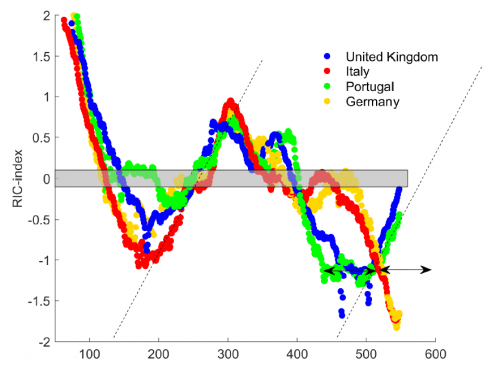A new index that can describe Covid-19 pandemic dynamics, predict the number of infections and the emergence of new variants was developed by a team of Italian researchers at the Rome International Center for Materials Science of Superstripes (RICMASS) that includes researchers from the National Research Council (CNR), the National Institute for Nuclear Physics (INFN) and the University of Camerino.
The new index, presented in the journal Scientific Reports and named RICMASS Index (RIC-index), is an alternative index to the well-known Rt (reproduction number) and DT (doubling time) values since it has been found to be able to successfully predict the emergence of the Delta variant.

“The algorithm for the determination of the RICMASS Index (RIC-index) was tested during the second wave. As demonstrated in the study, it provides a quantitative approach able to describe the dynamics of the pandemic by expanding the parameter space, i.e. by monitoring the evolution of the two commonly used variables, the DT and Rt values,” explained Gaetano Campi, Institute of Crystallography of the National Research Council (CNR-IC), one of the authors of the study.
The RIC-index time evolution data are available on www.superstripes.net and describe, with weekly updates, the evolution of the pandemic in European countries and Italian regions, providing direct information on the growth rates in infections.
“The algorithm showed the success of the vaccination campaign in Italy and anticipated the emergence of the incidence of the Delta variant in mid-July which had previously been observed in the United Kingdom and in Portugal,” said Antonio Bianconi, Director of RICMASS and of the CNR Institute of Crystallography. “This new physical-mathematical approach therefore appears to be extremely useful for predicting the evolution of Covid-19 in Europe, especially now that we are facing an unprecedented situation with the competition between the rate of implementation of the national, European and global vaccination programmes, the rate of transmission of the Delta variant and the possible emergence of a new variant, given the absence of an effective contact-tracing policy.”

